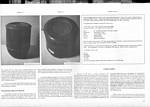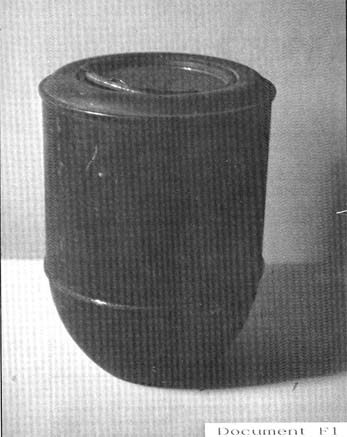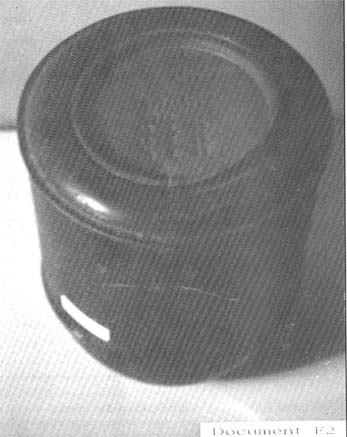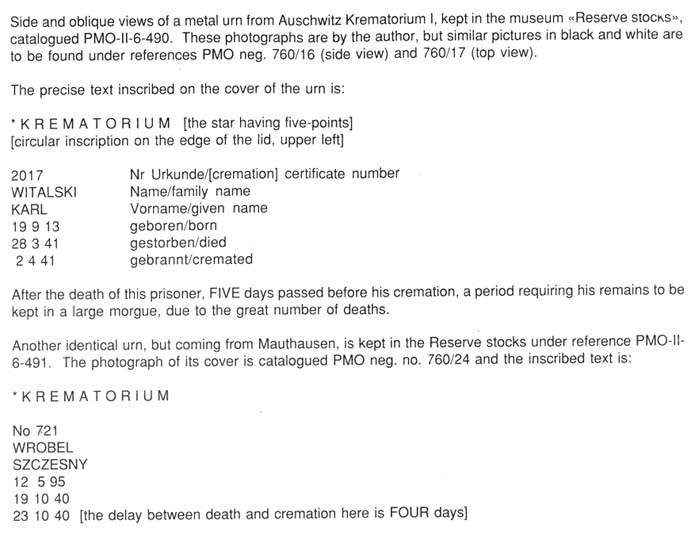|
|
 |
 |
AUSCHWITZ:
Technique
and Operation
of
the Gas Chambers © | |
|
| |
 |
Back |
 |
Contents |
Page 133 |
 |
Home
Page |
Forward |
 |
| |
| Document F1 |
Document F2 |
 |
 |
| Documents F1 and F2 |
 | |
thus creating a suite of six rooms whose communicating doors
were staggered in order to reduce the blast effect s of a bomb
exploding in the vicinity. The suite included an operating table and
a double wash basin with mirror (in the laying out room), and two
WCs (in the washing room) [Documents J1 and J2]. Entry was
through two air locks (one arranged in the vestibule through
building a wall between two of the supporting pillars, the other
being built at the opposite end of the suite, in the southernmost
room).
The second, unused part of the old Krematorium
(furnace room and its annexes) was used as a medical store
[according to the former prisoner Hermann Langbein].
Krematorium I after the Liberation
The
building was found as the SS had abandoned it [Photo 2]. It
would appear that the photos of the interior showing the state of
the premises were not taken at the beginning of 1945, which is a
pity because the restructuring of the building back into a
Krematorium began immediately after the liberation. During this work
a dance was organized on the roof [Photo 4] of the gas
chamber, an event no doubt to be explained by the euphoria be
resulting from the end of the war.
The chimney [Photos 8,
9, and others] was rebuilt in the form of the second model. Four
openings supposedly for pouring Zyklon B were made in the roof
[Photos 15 and 18] which was covered with roofing felt, thus
hiding the traces of the original opening. Four of the five
partition five walls of the air raid shelter were demolished. The
space obtained [Photos 26 and 27] became the present gas
chamber with an area of 94m2 (not including the air lock), while the
original gas chamber was 78m2 gas and did not have any access by the
air lock remaining to the south. The communicating door between the
morgue and the furnace room was reopened, unfortunately just beside
the original location [Photo 26]. The first two furnaces
[Photos 22, 23, and 24] were rebuilt from memory and as a
function of the metal parts found in the “Bauhof” (open air depot
for building materials). The third furnace was not rebuilt [Photo
25]. The entrance door to the medical store [Photos 6 and
10] was converted into a window. |
| |
| CONCLUSIONS |
| |
Because of the lack of original documents and the
transformations that have been made [see the drawing of the present
state of the premises at the end of this chapter], it was not
possible before to materially demonstrate the existence of a
homicidal gas chamber in the former morgue of Krematorium I, even
though the testimonies of former prisoners and SS formally affirm
its existence. This is why the revisionist attacks [see the remarks
by R. Faurisson on Krematorium I in “Vérité historique ou vérité
politique” by S. Thion, La Vielle Taupe, April 1980, pages 314 to
317] have essentially been concerned with this building, which is by
far the most visited in the camp. But at the end of February 1988, a
certain Fred LEUCHTER, an American engineer specialised in the
design and improvement of legal methods of execution in the United
States (including gas chambers), having been commissioned by the
“revisionists”, went to Poland and, without the authorization of the
P.M.O., took seven samples from bricks and cement in the
“Leichenhalle” of Krematorium I. The “report” that Leuchter wrote on
his return [ AN ENGINEERING REPORT ON THE ALLEGED EXECUTION GAS
CHAMBER AT AUSCHWITZ, BIRKENAU AND MAJDANEK POLAND. April 5, 1988]
indicates the cyanide levels found in the analysis of each sample,
expressed in miligrammes of cyanide per kilogram of sample (mg/kg).
Six of them were positive (3.8/1.9, 1.3, 1.4, 1.3, 7.9, 1.1
mg/kg) and one negative (taken from the floor according to the
sampling plan). These results, virtually all (6 out of 7)
positive, prove the use hydrocyanic acid in the “Leichenhalle” of
krematorium I, of hence its use as a homicidal gas chamber.
Today, despite its poor reconstitution, the krematorium I must be
considered as an authentic symbol of homicidal gassings at
Auschwitz, since several thousand people did indeed die there
through gassing.
When it turned out that Krematorium I no
longer sufficed for cremating the numerous dead in the camp, the SS
considered building a “new” Krematorium in the main camp about 20
meters from the first
| |
| |
AUSCHWITZ:
Technique
and operation
of the gas chambers
Jean-Claude Pressac
© 1989, The
Beate Klarsfeld Foundation |
 |
Back |
Page 133 |
Forward |
 |
|

